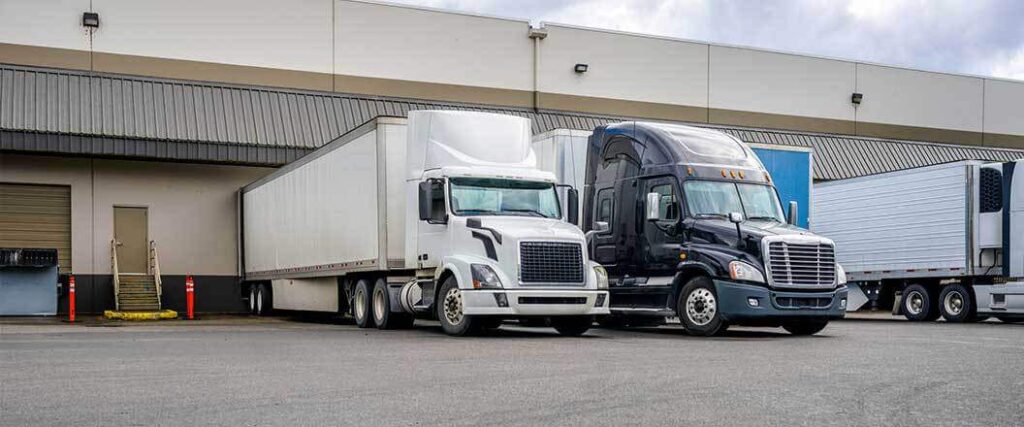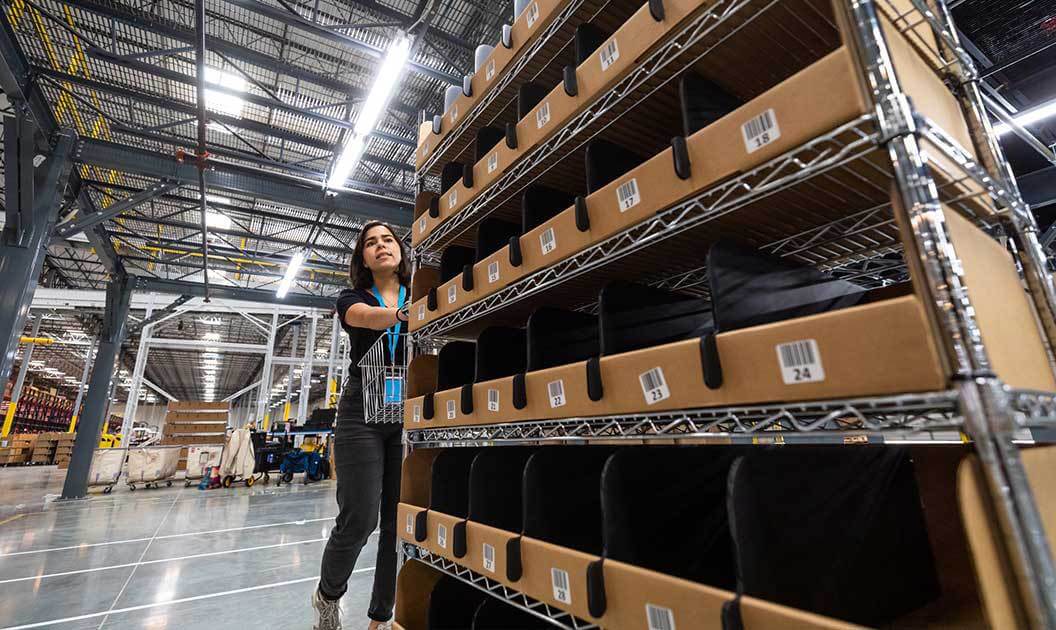Cross docking optimization is a strategy that companies are utilizing to get products to their customers faster. However, without the proper improvements to this service, businesses may face challenges like delayed shipments, increased costs, and wasted resources.
The International Warehouse Logistics Association (IWLA) notes that businesses can optimize their cross docking operations using different methods. These include:
- Efficient staging designs
- Planning & forecasting
- Reduced touchpoints
- Efficient training
- Regular review
These techniques result in faster shipping and happy customers.
With our help, we’ll show you how cross docking optimization will improve your business operations. Working with Transload Services USA, backed by over 10 years of experience, can be the first step.

Cross Docking Definition
Let’s start with a definition of cross docking to understand how it all works. Basically, a shipment of goods arrives at the inbound dock via truck trailers. The freight is unloaded and sorted for the assigned outbound semi-trailer truck. This critical step is the process of streamlining freight distribution from the manufacturing plant to the customer.
Ideal shipments are already palletized or in smaller packages and can be transferred from one point to another. The process means freight is handled less because it’s in and out so quick. There is no need for storage like in a traditional warehouse setting.
How To Achieve Cross Docking Optimization
Cross dock efficiency is essential for businesses that use this service in their warehouses. Fortunately, retailers can use a variety of methods that can be easily implemented to make this logistics operation as smooth as possible.
Efficient Staging Designs
Efficient staging designs are central to the success of cross docking services. These areas are the interim spot where goods are held before being loaded onto outbound vehicles. If they’re not set up efficiently, cross docking operations won’t work very well.
Benefits of using efficient staging designs include:
- Streamlined flow
- Safety and accessibility
- Dedicated zones
An efficient staging design helps goods flow in and out of the warehouse with no bottleneck issues. Products move directly from an inbound vehicle and onto an outbound truck. As a result, unnecessary handling is avoided and the possibility of damage or misplacement is reduced.
An optimized staging design prioritizes safety, with clear markings, wide aisles, and adequate lighting. This will help workers navigate efficiently, without the risk of them hurting themselves in the process.
Segmenting the staging area into dedicated zones for specific products or shipment types can significantly speed up operations.
This includes areas for:
- Perishable goods
- Electronics
- Apparel
Using dedicated zones for specific products can help warehouse workers better organize inbound and outbound shipments.
Demand Planning and Forecasting
Accurately predicting demand and coordinating with suppliers ensures the cross docking process is seamless, efficient, and meets the dynamic needs of the marketplace.
Having the right amount of workers in a warehouse is also essential for improving this service. With proper planning and forecasting, retailers can make sure they have enough personnel to perform efficient cross docking in their facilities.
Companies will also need to communicate with their suppliers while planning and forecasting for future demand. This will guarantee they receive the right amount of product to perform their cross docking operations.
Reducing Touchpoints
Every time a product is handled in the shipping process, there's a touchpoint. Reducing the amount of times this occurs can make a significant difference in cross docking optimization.
Benefits of lowered touchpoints include:
- Speed & efficiency
- Reduced costs
- Decreased damage
- Error minimization
Material handling of goods can take up time and slow down cross docking operations. The fewer times an item is touched or moved, the faster it can progress through the system. This hastens the entire process from receiving to shipping, leading to quicker deliveries.
Every touchpoint is an opportunity for product damage, whether from dropping, mishandling, or exposure to environmental elements. Minimizing these touchpoints reduces the potential for goods to be damaged, ensuring product quality and preventing loss.
Each time a product is handled, there's a chance for errors like mislabeling, misrouting, or incorrect quantities. Reducing the number of touchpoints limits the scope for these errors, leading to more accurate shipments.
Training & Workforce Management
At the heart of any successful cross docking operation is a well-trained and effectively managed workforce. Ensuring that employees are knowledgeable and working in harmony can significantly boost the efficiency and accuracy of cross docking services.
Retailers can help their employees perform this operation by providing:
- Skill development
- Safety protocols
- Efficient shift scheduling
- Team building activities
With the right training, workers will develop the skills needed to handle goods swiftly and correctly. Personnel that are efficiently prepared can process shipments faster, recognize and rectify issues on the spot, and work seamlessly with technology integrations.
Cross docking can involve handling very heavy and dangerous goods. As a result, there are plenty of opportunities for injury to occur. Retailers should make sure that warehouse workers know the right safety procedures to prevent this from happening.
Effective workforce management means having the right number of employees during peak times and avoiding overstaffing during lulls. Too many or too little amount of workers can stifle cross docking operations.
A team that works well together is vital for all warehouse operations. When cross docking, it’s especially important that workers can perform well with one another. Regular training sessions and team building activities foster teamwork, ensuring that staff communicate well and collaborate effectively to move shipments smoothly.
Regular Review of Operations
Consistent success in cross docking hinges on the ability to continually adapt and improve. Regular assessments can illuminate areas of improvement and ensure that operations stay streamlined and efficient.
Key performance metrics to review include:.
- Processing time
- Error rates
- Shipment delays
Reviewing these metrics will give companies an idea of the efficiency of their cross docking performance. Another way that companies can optimize this operation is by getting feedback.
Through different surveys, they can hear from:
- Employees
- Drivers
- Suppliers
- Customers
Based on what these groups have to say, businesses can identify what parts of their cross docking procedures need to be improved. Customers are especially important to consider, as their insights matter the most.
Reviewing common complaints, like the ones shown, provide insight into how you can improve and stand out.
Most Common Customer Complaints In the Logistics Industry
| Complaint | Percentage of Occurrence |
| Late Delivery | 44% |
| Faults In Product Quality | 31% |
| Damaged Goods | 12% |
| Other | 7% |
| Frequently Cut Items | 6% |
Provided by NCBI 2021
Companies should also look at ways to improve their technological capabilities. Using new tech integrations might streamline processes or enhance performance of cross docking operations. This can also give them a competitive edge over their rivals.
Cross Docking Optimization
A point for businesses to remember is that cross docking happens quickly. Shipments are scheduled to arrive at the inbound dock and leave via the outbound dock in a short amount of time. This means time is of the essence.
The days of sending truckloads of freight to a 3PL warehouse and then waiting to ship it are gone. Now, it’s all about how fast products can arrive and the quicker, the better! Businesses depend on a seamless process to manage the shipping side.
So before venturing into cross docking, companies need to be dedicated to shipping at a fast pace to keep everything moving to fulfill orders promptly. While there will be problems from time to time, it should be a rare occurrence.
At Transload Services USA, we take our cross docking optimization seriously. When you partner with us, you can expect:
- Prompt processing of your freight inbound and outbound
- Quicker delivery time to customers
- Less storage time in the warehouse
- Consolidation of inventory
- Cost savings
It’s these services that make us a premier option for retailers seeking to outsource their cross docking operations.
Inventory Management
As eCommerce continues to grow, it is imperative for companies to have an excellent inventory management system in place. This method will handle the bulk of the load to get shipments where they need to go on time.
The use of technology to track goods throughout the cross dock facility makes it easy for shippers to get a real-time view of the process. It allows for product levels to be adjusted if needed based on flow. In the long run, this helps save money and time because it prevents any wasted time.
To help this process, businesses should make sure shipments are labeled correctly to aid in the sorting process upon arrival at the dock. While it seems like a small step, just ensuring the labels and other documents are in place can expedite the process and ensure cross docking optimization.
In addition, organizing shipments and schedules is a key function for businesses when working with a cross docking facility. Especially when shipping large quantities of freight, coordination keeps the process moving smoothly for inbound and outbound cargo.
Distance to Delivery
One thing that helps businesses get products to customers in a timely fashion is the use of centralized locations. This means if bulk goods are coming from one location or several vendors, consolidation during cross docking leads to making the final delivery, which is typically within a specific radius of the facility.
The distance to delivery needs to be factored into the overall timeline and optimization efforts.
In order to maximize the speed of cross docking, the distance to delivery must be manageable to fulfill short timelines on a consistent basis. So the shipper and the warehouse must work in unison to get the job done.

Retail Cross Docking
Retailers distributing large quantities of merchandise often depend on cross docking to get goods from the manufacturer to store shelves or to the customer’s door. Typically, businesses have several items coming from different vendors that will be consolidated into one shipment headed for outbound trucks.
In other instances, retailers offering subscription services to customers can use the cross docking option for deconsolidation arrangements to expedite delivery to customers within a specified region.
The retail cross docking option requires coordination, just like it does for other supply chain sectors. Shippers should contract with a cross docking facility optimized to handle their freight without any complications. Timing is everything in retail, so a reliable cross docking plan is critical for retail customer service.
Optimize Your Cross Docking Services with Transload Services USA
In the ever-evolving world of logistics, staying ahead means embracing optimized solutions like cross docking. As we've explored, mastering this art can significantly elevate your supply chain efficiency, reducing costs and ensuring timely deliveries.
At Transload Services USA, we pride ourselves on being industry leaders in cross docking optimization, providing tailored solutions that drive tangible results for our clients.
Our suite of services includes:
Don't let inefficiencies weigh down your logistics operations. Make the smart move and partner with a team that knows the industry. If you're ready to take your business to the next level, fill out your quote request for services. You can also reach out to us at (352) 282-4588 for any questions you have about what we offer.


